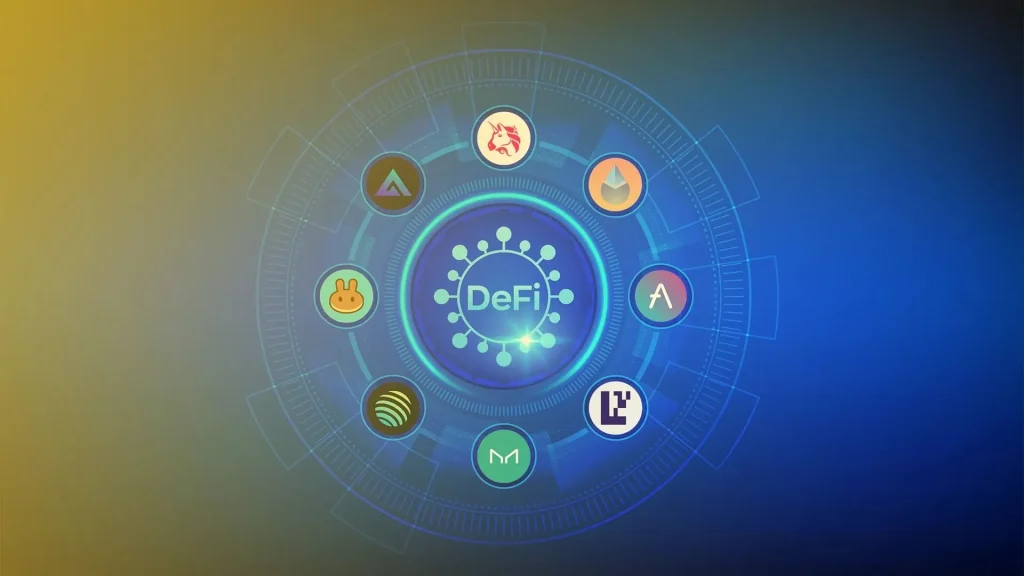Blockchain technology first came to prominence with Bitcoin in 2009. Since then, it has expanded into new areas beyond digital currencies. One growing field is decentralized finance or “DeFi” for short. DeFi aims to recreate traditional financial products like loans, trading and savings on public blockchains without intermediaries. This post explores the basics of DeFi and why it marks an exciting new phase in finance.

Content
What is DeFi?
In DeFi, financial applications are built on blockchains using smart contracts. Smart contracts are lines of code that self-execute when conditions are met. This replaces the need for middlemen in financial transactions by directly connecting peer-to-peer on public ledgers. Common DeFi services include lending, borrowing, insurance and crypto exchanges using blockchain-based counterparts of conventional finance tools. Users interact with DeFi through its open-source software and smart contracts, not via a centralized company.
Key Benefits of DeFi
DeFi brings some notable benefits over traditional centralized finance:
- Accessibility: Anyone with an internet connection can access DeFi worldwide as blockchains have no borders. This financial inclusion was not possible earlier.
- Transparency: All DeFi transactions and activities are visible on transparent public ledgers for trust and verification. This level of visibility is new to finance.
- Decentralization: Without any central points of control or failure, DeFi applications can keep running as long as the underlying blockchains function.
- Security: Smart contracts are programmed to self-execute functions securely through code which prevents fraud or human errors inherent in older financial systems.
- Lower fees: Lack of intermediary overhead ensures lower transaction costs in most DeFi services compared to centralized peers.
Overall, DeFi aims at making financial services more accessible, transparent, resilient and affordable through code and cryptographic protocols. This shift promises deeper financial inclusion globally.
Popular DeFi Applications
Since 2017 when the first DeFi applications launched, the sector has grown rapidly. Here are some key DeFi platforms used widely today:
- Lending – MakerDAO offers crypto-collateralized loans called Dai while Compound lets users lend or borrow various crypto assets.
- Exchanges – Uniswap is a popular decentralized exchange (DEX) allowing direct peer-to-peer token swaps without a middleman.
- Derivatives – Synthetix offers synthetic token assets backed by crypto collateral while Hedget enables options trading through smart contracts.
- Insurance – Cover Protocol provides policy-based protection for smart contract risk using on-chain policies and payments.
- Payments – Rails allows cross-border remittances and commerce payment settlement via the blockchain.
- Asset management – Yearn.Finance allows users to earn yield through DeFi money markets and strategies using automated smart contracts.
Many innovative DeFi use cases are still evolving. This space only promises greater financial empowerment and new economic opportunities as it grows.
Current Challenges
While revolutionary in theory, DeFi still faces hurdles towards mass market adoption:
- Volatility: Cryptocurrency price swings currently translate into high volatility in DeFi too until markets stabilize long term. This risks capital issues for some risk-averse users.
- Complexity: The operational nuances of DeFi protocols require technical comprehension for most. This learning curve to access these open-source platforms is steep until simplified.
- Security: DeFi reliance on code for automation also exposes applications to risks of hacks or exploits until techniques like formal verification and audits improve. Recent hacks have led to significant losses.
- Regulations: Regulators are yet to clearly define regulations for DeFi given its complexity. Unclear policies pose legal ambiguity risks currently deterring bigger institutions.
- Infrastructure: As a new domain, core DeFi infrastructure around custody, insurance, stablecoins etc needs further development before going mainstream.
Addressing these valid concerns around volatility, security and regulation will decide how successfully DeFi scales beyond early adopters in the long run.
Future Potential
Still in its infancy, DeFi has tremendous potential to disrupt global finance if it overcomes initial barriers and matures:
- Total value locked across all DeFi platforms grew 100-fold to $80 billion since June 2020 highlighting fast adoption rates.
- Emerging economies may leapfrog into DeFi, bypassing traditional banking that never served their populations at scale.
- DeFi primitives like stablecoins, lending, derivatives and IDO’s (initial dex offerings) can generate new investment opportunities globally.
- Interoperability advancements across blockchains would pave the way for universal DeFi accessibility from any public ledger.
- Institutional embrace of DeFi via regulated compliant wrappers and simpler interfaces is anticipated as confidence builds.
Decentralized finance represents a paradigm shift that has only begun. If addressing challenges around security, policy and complexity successfully, DeFi could transform access to financial services worldwide sustaining unprecedented inclusion, transparency and innovation. The next decade will prove pivotal for its mainstreaming.
Conclusion
DeFi shows great potential to deliver a fairer global financial system but has just started its journey. Overcoming initial doubts around volatility and security needs continued progress. Responsible growth with cooperation of all stakeholders including regulators can help DeFi achieve its goal of true decentralization while addressing legitimate concerns. If barriers are addressed sensitively, the eventual success of DeFi in a balanced framework may be a watershed moment heralding a new era of inclusive finance empowering billions worldwide through code and consensus.



